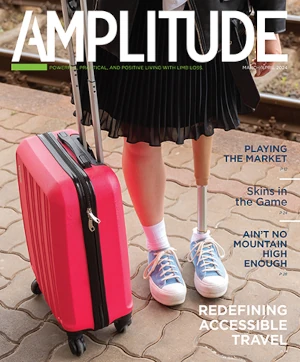
Lerouge and Lapointe examine the cancer-fighting biogel they have developed. Image courtesy of CRCHUM.
A new injectable “biogel” is effective in delivering anti-cancer agents directly into cancerous tumors and killing them. This technology, developed by researchers at the University of Montreal Hospital Research Centre (CRCHUM), has already been successfully tested in the laboratory.
Unlike gelatin, the biogel is liquid at room temperature and gels at human body temperature.
“The strength of this biogel is that it is compatible with anti-cancer immune cells. It is used to encapsulate these cells and eventually administer them using a syringe or catheter into the tumor or directly beside it. Instead of injecting these cells or anti-cancer drugs throughout the entire body via the bloodstream, we can treat the cancer locally. We hope that this targeted approach will improve current immunotherapies,” said Réjean Lapointe, PhD, co-author of a study on the technology that was recently published in Biomaterials.
One form of immunotherapy involves treating cancer patients with anti-cancer immune cells. This is called adoptive cell therapy. These cells (T lymphocytes or T cells) are produced naturally by the body and have the ability to destroy cancer cells, but they are generally too weak and too few to eradicate the cancer alone. T cells are therefore cultivated in the laboratory and then reinjected into the patient’s blood. While this form of immunotherapy has shown promising results in cases of advanced cancer, it is not always possible to generate enough T cells. Moreover, high doses of interleukin-2, a hormone added to maximize the therapy have a toxic effect.
“With our technique, we only need to administer a few dozen million T cells, instead of the billions currently required. We can also administer compounds that ‘awaken’ the immune system to fight against cancer,” explained Lapointe, who is a researcher at the CRCHUM and professor at the University of Montreal.
The recipe for the biogel was developed by Sophie Lerouge, PhD, a researcher at the CRCHUM and professor in the Department of Mechanical Engineering at the École de technologie supérieure. The compound is made from chitosane, a biodegradable material extracted from the shells of crustaceans, to which gelling agents are added.
“The T lymphocytes in the gel are functional and can grow for two to three weeks, be released from the gel, and kill the cancerous cells,” explained Lapointe.
The next step is to demonstrate the effectiveness of the biogel in animals and humans. If the trials are successful, this new approach could be added to current cancer therapies in a few years.
This article was adapted from information provided by the University of Montreal.



